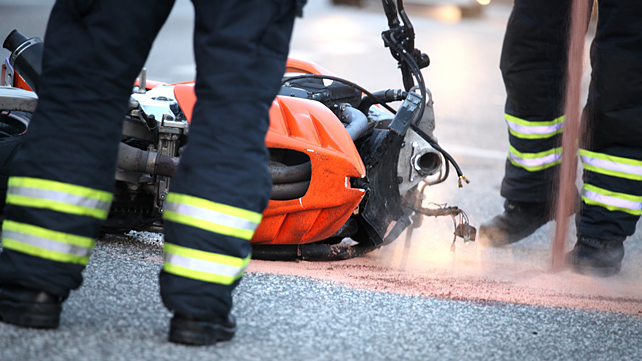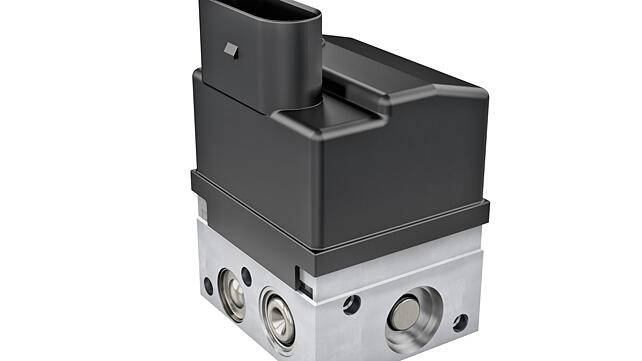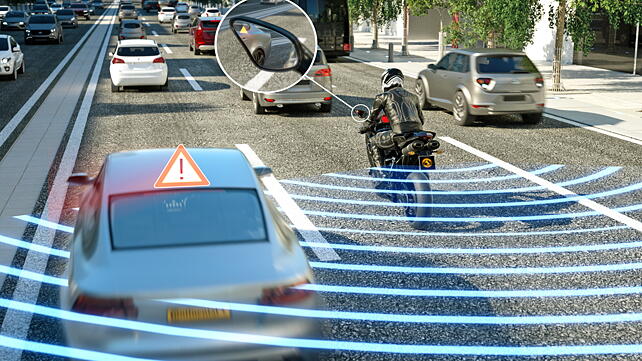
India is a growing automotive hub and is the largest two-wheeler market in the world. This has necessitated prioritising the introduction of safety technologies by the automotive industry in the country. Researching and developing new technologies that suit the needs of the people will not only help to reduce fatal accidents but there is also the added benefit of large-scale employment opportunities.
The Indian two-wheeler market is growing, and manufacturers have now started looking at improved standards and technologies that will enhance safety provisions. It pushes the manufacturers to be innovative and flexible to adapt globally proven technologies to suit local requirements. The onus of providing the Indian market with affordable and reliable safety technologies rests largely with the suppliers such as us.
According to Statista, despite the pandemic, two-wheeler sales in India were 15.12 million units in FY21. The primary drivers behind this growth are a low cost of ownership and an increase in demand in urban and semi-urban areas. Automotive manufacturers have started to invest in India to produce technologies that are more suitable to serve the needs of the local market keeping in mind the requirement, scenario, and conditions.
Affordable Safety Technologies
Two-wheelers are the main source of commute for many in India, especially in II and rural regions. Therefore, affordable safety technologies for mass-market become so much important. For instance, the one-channel ABS works just as well as dual-channel ABS when it comes to lower-powered vehicles. Continental introduced the MiniMAB based on the proven ABS platform, designed and developed especially for emerging markets that can be easily adapted by smaller power vehicles.

The next logical upgrade after ABS is Optimised Curve Braking or cornering ABS. This technology will particularly come in handy in the mid to higher-power bikes in curbing road fatalities, while applying brakes on the curves and turns. This feature helps riders apply brake in curves or turns, where there is a high tendency of falling due to wheel lock.
The ABS brake system takes the angled position of the motorcycle (using lean angle information from the continental sensor box) into account. Depending on the incline, the ABS control becomes highly sensitive to prevent wheel lock while providing good braking and steering, thereby improving vehicle handling in curves, and making the braking process safer.
Traveling to hilly terrains on two-wheelers has become a sought-after sport for many or even off-roading to quench adventurous motorcycling passion. The Traction Control System proves to be an important safety feature especially when a person is riding on a gravelly, muddy, or loose sand surface. This safety feature helps in reducing the tyre slip on the driven wheel on slippery roads and surfaces while accelerating.

It helps to accelerate and manoeuvre efficiently and adequately making the riding safer, thus, boosting the confidence of the driver. The TCS uses the wheel speed sensor information to monitor if the rear wheel is spinning faster than the front wheel. Once the speed difference is sensed, the traction control system helps to reduce the engine torque on the spinning wheel. Thus, limiting the chance of slipping or skidding.
The Electronic Drag Control is an extension of the Traction Control System, which further controls excessive wheel slip and tends to realise the best balance between vehicle stability and deceleration in engine drag situations. It controls vehicle drag torque and therefore the propulsion at the wheel appropriately.
Advanced Safety Features
With the rise in demand for high-performance motorcycles in India, advanced safety features to complement the riding performance has become inevitable. High-performance bikes tend to generate a lot of power and the engine is required to send an optimal amount of power to the wheel. This is where the front lift protection safety feature comes in. This function monitors the wheel behaviour to detect a lift-off situation and quickly adjusts the engine torque, thereby stopping the right propulsion at the wheel to stop backward rollover and falls.
With the increase in the congestion on roads, Motorcycle Hold & Go (MHG) proves to be another important feature that helps the rider to hold the bike uphill or downhill stop in a situation without having to continuously hold the brakes. This enables the rider to relax, work on navigation or maps, etc. MHG function is activated by a special hand lever application by the rider thus indicating the system to lock the front wheel.

As India is a tropical country, the weather conditions are extreme. In summers, the temperature can go up to 45° C and even more, which can result in low tyre pressure or pressure loss because of extremely hot road surfaces. Tyre Pressure Monitoring System (TPMS) helps in maintaining an optimal tyre pressure by monitoring the air pressure. It also assists in maintaining a safe driving situation and effective braking. Low tyre pressure burdens the engine to generate more power, which in turn consumes more fuel than usual. With TPMS such situations can be avoided.
High-end solutions, such as ARAS (Advanced Rider Assistance Systems) technologies have a lot of potential in markets like India. Rear view mirrors are mainly used by two-wheelers to detect the movement of vehicles even on roads with sharp turns. This does not offer a full view and sight of the vehicles.
The Blind Spot Detection solution monitors blind spots for the rider on the adjacent lanes with a radar sensor and can provide visual warnings to the rider in case of any approaching vehicles. Additionally, this system can also indicate hazardous lane changes through the Lane Change Assist (LCA) feature. Rear-facing radar sensors scan the road area behind and next to the motorcycle, providing a warning if a lane change is unsafe at a given point in time.
Every motorcycle rider is aware of the acceleration potential of the motorcycle, but very few are aware of the braking capability and braking distance at a given speed. The Forward Collision Warning feature alerts the rider by giving a visual warning when the system detects a high risk of collision with the vehicle in front by using a front radar sensor.

An advanced extension of the Forward Collision Warning would be an automatic braking manoeuvre or an emergency brake assist feature, which helps to reduce collisions/ impact of the collision.
On the other hand, Adaptive Cruise Control enables two-wheelers to have a more relaxed and safe riding experience for long journeys. This intelligent function always ensures a safe distance to the vehicle in front and a smooth ride at the same time. It detects relevant objects in front of the vehicle by a radar sensor, even when riding in an inclined position, and performs an automatic correction of the motorcycle’s speed.
Conclusion
India is a cost-sensitive market where such sophisticated technologies can be introduced through local R&D to keep the technologies affordable. As the country is moving towards electrification, the electric vehicle too will gain a lot from these technologies and will help in boosting optimal vehicle riding conditions. Value engineering will play a key role in adapting proven high-end and passenger car technologies to suit specific riding needs.
About The Author: Praveen Kumar is Head of R&D, Vehicle Dynamics Segment at Continental Automotive India.
Also Read
Propagating Safety, Continental Showcases Innovative Technologies For 2Ws
Continental’s Solutions To Augment 2W OEMs' Intent To Reduce Accidents